Our mission is to provide every billiard player a personal dashboard evaluating their level and skill dynamics
In order to be able to make valid statements about technical skill we defined several criteria that describe skill level in terms of quality and quantity. These criteria are to become an important guideline at the practice regime of an athlete and also a tool for coaches and individuals which helps to develop players skills.
Criteria of technical skill

Ratio of balls pocketed to total number of attacking shots. Measured in percent, 0 to 100%. Balls pocketed unintentionally are not considered, neither are safeties and break shots, but balls made on a foul are considered
Break shot quality
Ratio of successful break shots to total number of break shot attempts. Measured in percent, 0 to 100%. A break shot is successful if at least one ball was pocketed and the player’s inning continued
Runouts
Ratio of runouts to total number of racks played. Measured in percent, 0 to 100%. Runout is a situation where a player stays at the table pocketing all the balls required to win a rack, without the opponent getting a visit at the table. Here not only break and runs are considered but also those racks where the player’s opponent made first (unsuccessful) shot.
Average run
Average number of balls pocketed by the player per inning. Calculated as a ratio of total balls pocketed to total number of innings
Safeties
Ratio of successful safety shots to total number of safety shots attempted. Measured in percent, 0 to 100%. A safety shot is considered to be successful if:
- the player’s opponent committed a foul after such a safety;
- the player did not leave his opponent an open table

Integral value which reflects position play success by three quotients. It denotes the difference between average run and average complexity rate for a certain ball being played.
An important role in calculation of this goes to the average run, as it is directly linked to cue ball control skills. Average shot complexity is deducted from average run by three aforementioned factors. There is a possibility that this criterion value could turn negative if average run of a player is pretty low.